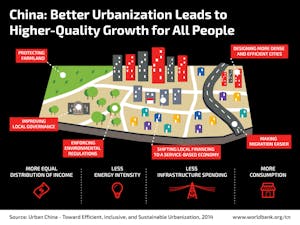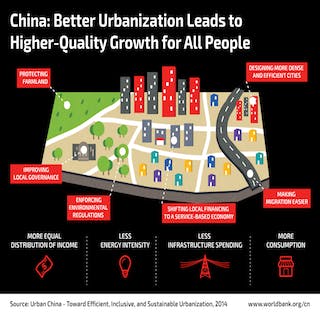 For the first time in history, most humans live in cities. How well we do so will determine our future.
For the first time in history, most humans live in cities. How well we do so will determine our future.
A century ago, only two out of every 10 people lived in urban areas, but that proportion has shifted rapidly since then. We just passed the halfway point, and by mid-century 70% of all humanity will be city dwellers, according to the UN’s World Health Organization.
Dense, compact cities are actually good for the environment, making energy use more efficient and enabling mass transit to thrive. Sprawling urban areas are quite another matter.
That’s why it’s so encouraging and important that the World Bank and the Development Research Center of China’s State Council have collaborated on a new report on Efficient, Inclusive, Sustainable Urbanization. As China rapidly urbanizes, its decisions on the design of new cities will have far-reaching impacts.
The new report points in the right direction. Reforming urban planning will be critical to making cities denser and more efficient. Linking transport infrastructure with urban centers will lead to better management of congestion and pollution.
Recognizing the costs of pollution to human health and well-being, the report says that “environmental degradation needs to be halted and reversed. China already has tough environmental laws, regulations and standards. … Now the most important task for achieving greener urbanization is vigorous enforcement of those standards.”
Getting urban design right is a complicated problem with many different dimensions that are addressed in the new report. But recognizing that you have a problem is the first step toward solving it – and that is a step that China has now taken with the World Bank.

